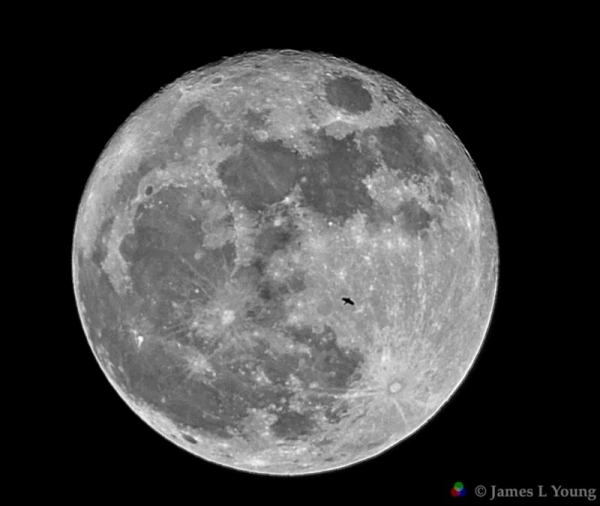Normally I do not like to take close-up photographs of a full moon because the direct lighting make the surface very flat and dull. Crescent moons have sideways illumination and the mountains and craters are much more distinct. However it is very difficult to pass up a chance to photograph the 2016 supermoon which is the brightest since 1948. For this photo shoot I simply set-up my camera on a sturdy tripod and took a few stills, then ran the camera in video mode for a while. The following image was sharpened with wavelets and then converted to monochrome.
The next images is from the video and shows a bird in flight passing in front of the supermoon. (the video image is smaller and of lower quality than the previous image) Taking videos of a full moon allows you to catch flying birds at night that would normally be invisible. Some researchers observe nocturnal bird migration by moon-watching. Here are some instructions. The only real complication for moon photography is to keep the moon in the frame since it will quickly drift out of view, particularly at higher magnification. For short videos or stills you can simply re-point the camera by hand but for long exposures it’s best to use an astronomy tripod with a tracker. Jim

